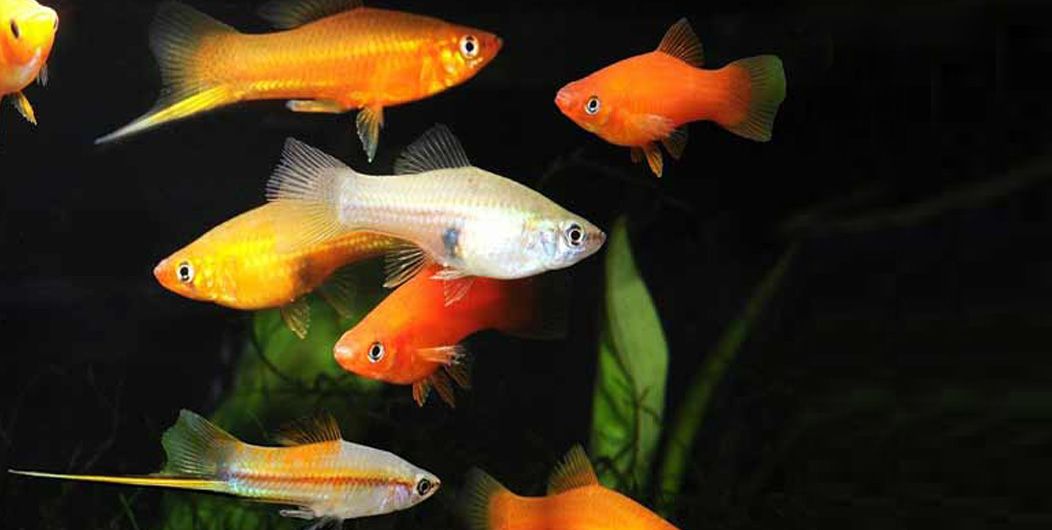
Just as with apparel, tea, and coconut products exports, and so on, Sri Lanka is recognised as a supplier of good quality ornamental fish to the international markets, that is, more than 125 countries. Even if the current volume and value of ornamental fish exports from Sri Lanka are quite low as a percentage of the total export basket, the industry holds vast potential, largely untapped to date, because the country is home to a total of 111 ornamental fish species living in fresh, brackish, and marine waters. Out of the freshwater aquarium fish species exported from Sri Lanka, about 60 – 70% consists of the fancy guppies that enjoy great demand in the international markets. The conducive climate and the availability of coral reefs, sand bars, lagoons around the country as well as inland water bodies such as streams, rivers, and reservoirs provide the ideal ground for breeding marine, brackish water and freshwater species in Sri Lanka.
The roots of the ornamental fish industry stretch back to nearly a century when a group of hobbyists and collectors started exploring and discovering exotic fish varieties in the rivers, lagoons, and marine habitats around the country. In the early 1930s, unbeknownst to the treasure the country already possessed, Sri Lanka had imported ornamental fish for pet lovers and as a major source of relief for mental stress and illnesses of patients. Later in the 1950s, when it dawned on them that the ornamental fish found in Sri Lanka held enormous potential, Sri Lankan exporters ventured into the export market with striking species of guppies, swordtails, platys, barbs, tetras, angels, gouramis, and catfish.
Ornamental fish exports consist of 70% of the freshwater ornamental fish and 30% of the marine ornamental fish. The key species of freshwater ornamental fish exported from Sri Lanka can be enlisted as follows:
The state agencies in charge of the promotion and development of the ornamental fisheries industry in Sri Lanka have to formulate viable measures to address these constraints that hold the industry back. Despite the passage of some 14 years since it must be noted that most of these challenges persist to date.
The following measures and strategies have been recognised as instrumental to the holistic growth of the ornamental fish industry in Sri Lanka.
Marine fish species make up more than 15% of the market by value, with about 98% collected from the wild while the remainder is captive-bred. Although it’s more costly and not as easy to maintain as freshwater aquaria, keeping marine fish in aquaria is becoming more popular. Particularly in the USA and Europe, as prices are becoming more affordable, the marine aquarium sector is expanding rapidly. Technical and economic developments have also helped contribute to the popularity of marine aquaria, especially marine reef ecosystem aquaria complete with fish, corals, shellfish, molluscs, and plants.
The anticipated growth in the market is attributable to changing lifestyles and the growing preference of millennials in keeping aquariums as home decor items. With increasing disposable income, consumers are willing to spend on ornamental fish to be kept in their home aquarium. Further, various scientific studies reveal that the use of ornamental fish in the household aquaria provides psychological advantages to the house members; hence, the market is witnessing an increasing demand for ornamental fishes. The aquaria are also believed to help in reducing stress and provide a calm effect on the members of the house. With the increasing popularity of household aquaria kept by hobbyists, less than 1% of the global market for ornamental fishes belongs to the public aquaria sector.
All in all, the export potential of the ornamental fish industry in Sri Lanka remains largely untapped. With the forecast compound annual growth rate of 10% in the global ornamental fish market, Sri Lanka too can capture a significant slice of the market, one that is much larger than what the country currently enjoys.
Sri Lanka is one of the leading ornamental fish exporters to the world with our aquariums and fish farms successfully captive breeding some of the most exotic and rare freshwater, marine and brackish water fish species and marine ornamental invertebrates in the world